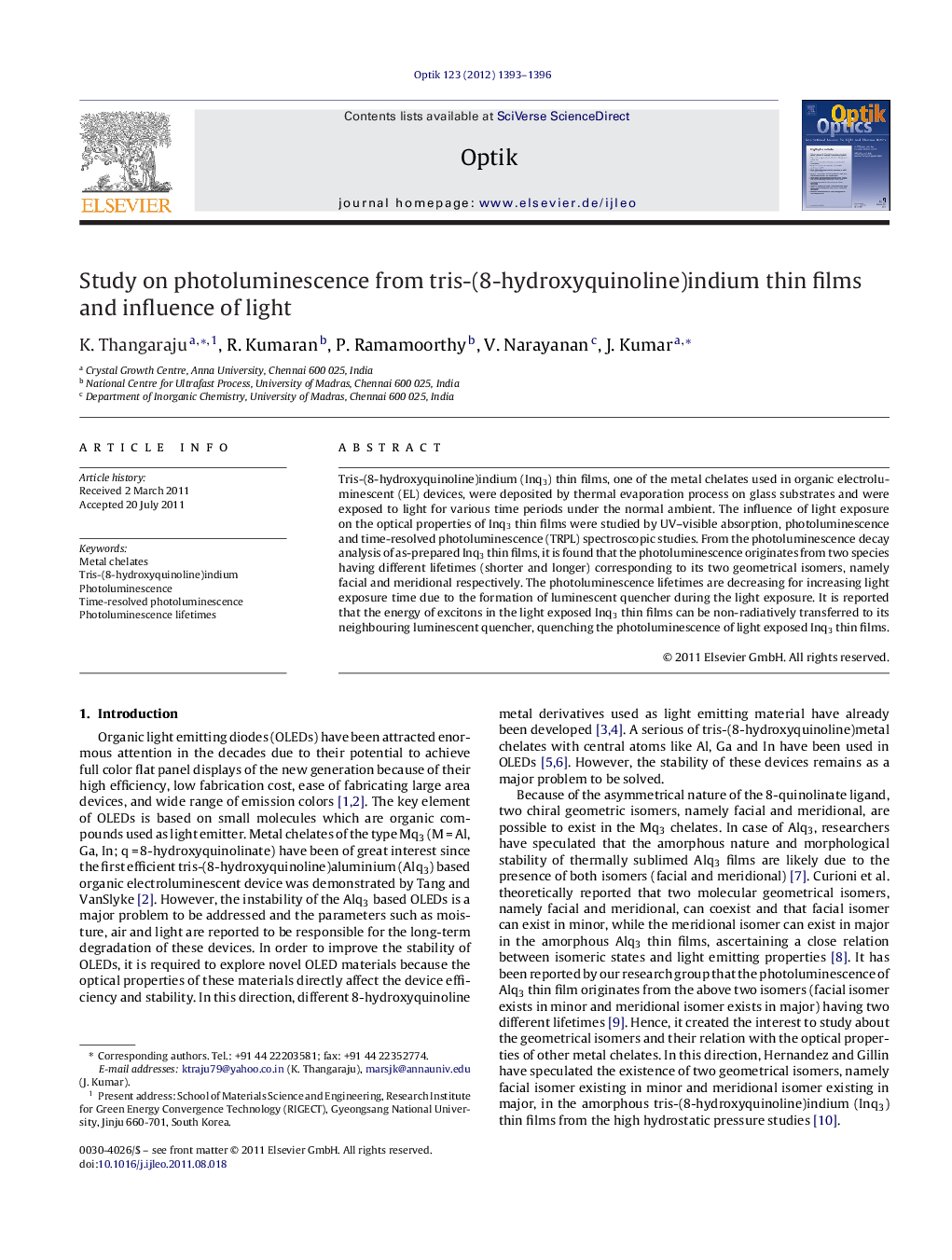| Article ID | Journal | Published Year | Pages | File Type |
|---|---|---|---|---|
| 851458 | Optik - International Journal for Light and Electron Optics | 2012 | 4 Pages |
Tris-(8-hydroxyquinoline)indium (Inq3) thin films, one of the metal chelates used in organic electroluminescent (EL) devices, were deposited by thermal evaporation process on glass substrates and were exposed to light for various time periods under the normal ambient. The influence of light exposure on the optical properties of Inq3 thin films were studied by UV–visible absorption, photoluminescence and time-resolved photoluminescence (TRPL) spectroscopic studies. From the photoluminescence decay analysis of as-prepared Inq3 thin films, it is found that the photoluminescence originates from two species having different lifetimes (shorter and longer) corresponding to its two geometrical isomers, namely facial and meridional respectively. The photoluminescence lifetimes are decreasing for increasing light exposure time due to the formation of luminescent quencher during the light exposure. It is reported that the energy of excitons in the light exposed Inq3 thin films can be non-radiatively transferred to its neighbouring luminescent quencher, quenching the photoluminescence of light exposed Inq3 thin films.
